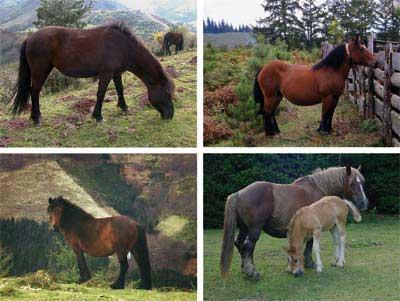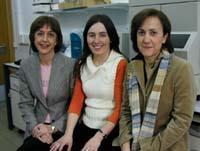Horses of Euskal Herria

Fatherhood and versatility
First, the genetic variability of these populations was analyzed to see if the local races had sufficient genetic diversity to advance against a possible disease. For this purpose, the microsatellites - DNA regions with specific characteristics - were selected as the first marker.
The microsatellites are also very useful for identification, so they can form a digital footprint for each horse. That is, they serve to identify the father and mother with a certainty equal to or greater than 90%.
A total of 417 animals were analyzed: 147 pottokas, 163 mountain horses from the Basque Country, 62 horses from Navarre and 45 horses from Auritz. Two races are meat horses, heavy (the horse of Navarre and that of Auritz/Burguete), and the other two are light.
The results indicate that meat horses are mixed with foreign breeds to be larger, especially have been used foreign males to cover females. Thus, it seems that among our races there is a gradient; the pottoka is the least external influence has had and the greatest horse of Auritz.
On the other hand, it is observed that the Basque races are more variable than the others in the case of microsatellites. This has an explanation: the autochthonous races are usually free on the mountain and more males cover each female, so the variability is greater compared to other races.

Morphology and genes
Subsequently, the researchers chose as the second marker an SNP (single nucleotide change) of a gene related to horse morphology. In view of these four horse races being morphologically different, they wanted to see if there was that genetic difference.
According to studies, pottokas present a certain variation of this SNP in very few occasions, while as the external effect increases, this variant is more frequent. Based on this, it is confirmed that in this case the external impact has been less.
Information of the mother
The final marker has been mitochondrial DNA, the DNA that is only received from your mother. Mitochondrial DNA has allowed to establish phylogenetic relationships between the four races analyzed. In addition, mitochondrial DNA serves to establish its relationship and provenance with other populations of horses.
As for the results, the four local races relate to each other, especially related geographically: the pottoka with the mountain horse of the Basque Country and the horse of Navarre with that of Auritz. In addition, they have seen that they are related to other European and world countries, but there are still many geographical gaps to establish phylogenetic relationships between European equine races.
And there are striking results: a variant of mitochondrial DNA appears here and only in England.
Therefore, many interesting and significant data have been extracted from these studies. It seems, moreover, that in Europe and, more specifically, in the Iberian peninsula, much remains to be investigated about the domestication of horses.






